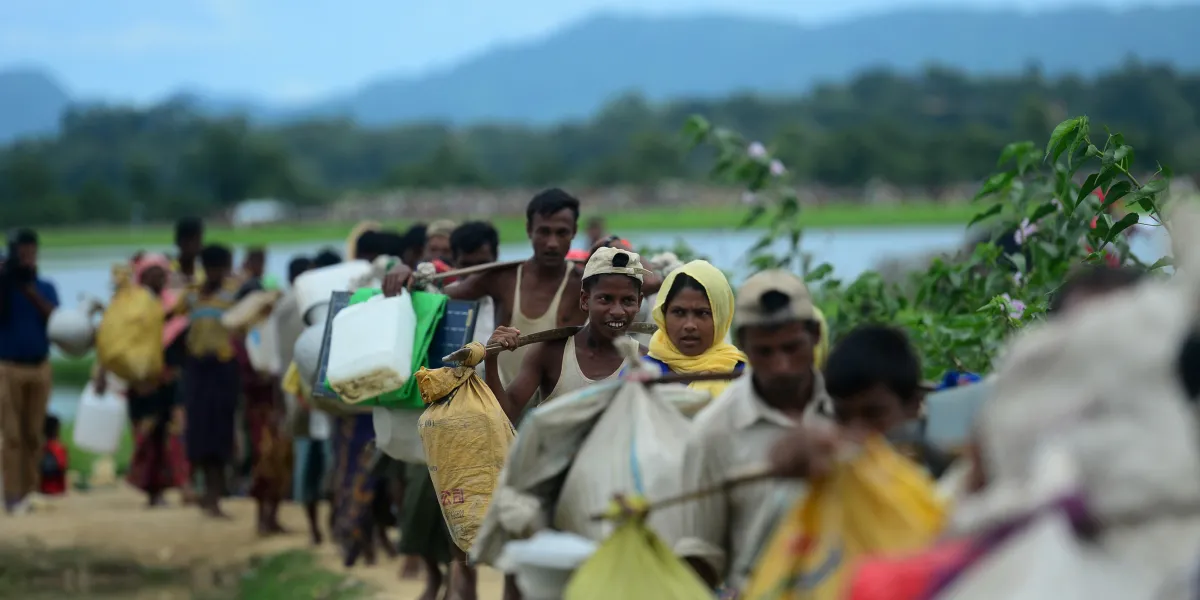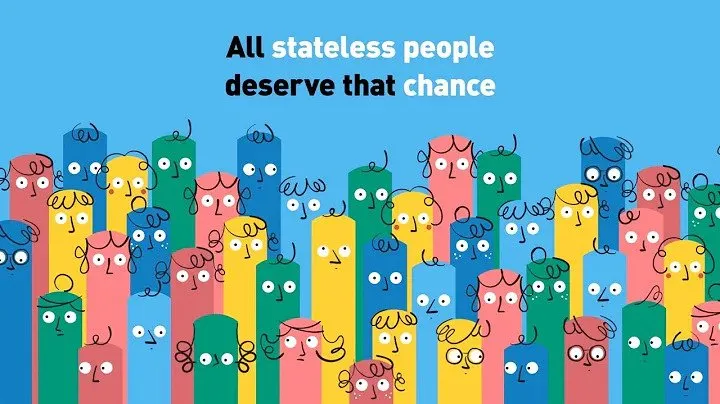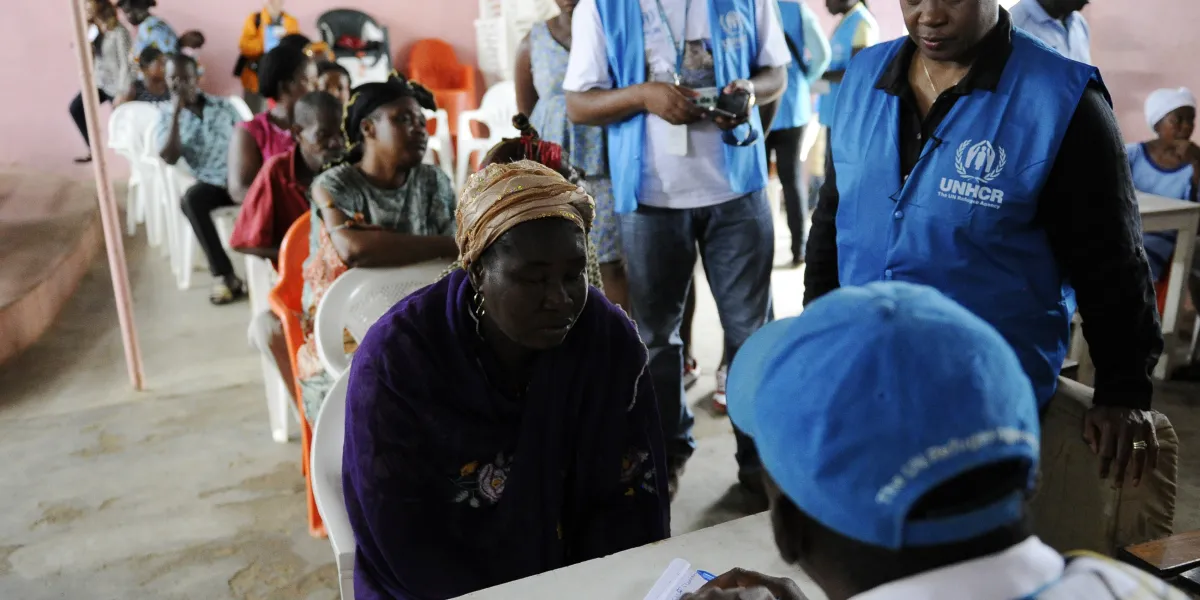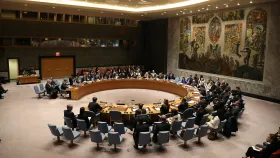Statelessness Around the World
Without a country to call their own, millions of people experience discrimination and persecution.
Teaching Resources—Building Blocks: Challenges (including lesson plan with slides)
Higher Education Discussion Guide
Every two years, athletes from around the world gather to compete in the Olympic Games.
Competitions commence with host nations organizing spectacular opening ceremonies full of pageantry and, at times, peculiarities. At the 1992 Barcelona, Spain, opening ceremony, an archer lit the Olympic torch with a flaming arrow. At the 2012 London opening ceremony, organizers screened a film showing James Bond and Queen Elizabeth II, with stunt doubles later parachuting into the stadium. In Sochi, Russia, in 2014, the Russian Police Choir kicked off the winter games with a rendition of Daft Punk’s disco-pop hit “Get Lucky.”
Although each country puts its own twist on the opening ceremony, the event has had one commonality throughout the years: the Parade of Nations. Millions tune in to watch thousands of athletes from scores of countries process into the stadium waving their nations' flags.
In theory, the teams collectively represent the entire world. In reality, that’s not entirely the case.
Eight billion people live in nearly two hundred countries, but not every person has citizenship in one of those countries. Between four and ten million people worldwide lack citizenship in any country. This precarious legal and logistical limbo is known as statelessness.
Statelessness is a serious situation, going well beyond a lack of Olympic representation. Without citizenship, millions of people face discrimination in their countries of residence. Stateless people struggle to access basic government services such as public education and health care.
In this resource, we’ll explore the consequences of statelessness, its causes, and the ongoing efforts to remedy this international challenge.
What are the consequences of statelessness?
In 1948, the United Nations adopted the Universal Declaration of Human Rights. This landmark document enumerated a series of basic political, economic, and social rights to which all men, women, and children are entitled—including “the right to a nationality.”
The United Nations understood the fundamental importance of citizenship and the grave dangers of statelessness. Without a nationality, stateless people often lack access to public education, health care, housing, social services, employment opportunities, and voting rights. This position forces people to live in the shadows of society, exacerbating poverty and social unrest.
In Syria, for instance, a discriminatory 1962 census stripped 120,000 ethnic Kurds of their citizenship. In subsequent decades, this stateless Kurdish population grew by some estimates to more than three hundred thousand people. As a result, many from the minority group have long been ineligible for government food subsidies, care at public hospitals, and government jobs. Stateless people are disqualified from professions that require a license, like doctors and teachers.
In Mauritania, meanwhile, the government revoked the citizenship of over sixty thousand Black Mauritanians in 1989 amid sectarian unrest, forcing many people to leave the country. Mauritania has since allowed those who were expelled to repatriate. However, many returnees reported legal difficulties related to obtaining national identification cards and proving property rights.
Statelessness can be so harmful that some countries ban the practice of revoking citizenship. In fact, in 1958 the U.S. Supreme Court barred the U.S. government from punitively revoking a person’s citizenship, calling it “a form of punishment more primitive than torture.”
Due to underreporting, determining the exact number of the world’s stateless population is difficult. The United Nations counts 4.3 million stateless people—of which approximately one-third are children—in nearly 100 countries; however, the organization notes that the actual total is likely significantly higher.
Notably, stateless people are not necessarily refugees—and vice versa. Many stateless people never leave their country of residence. Additionally, many refugees, although displaced from their homes, remain citizens of those countries. However, refugees can still become stateless if their governments revoke their citizenship.
What are the causes of statelessness?
Statelessness can occur in various ways, including if a person renounces their citizenship with one country before obtaining citizenship with another. However, most people do not choose to be stateless; rather, it is usually a circumstance they are born into or that a government forces upon them.
Let’s explore four leading causes of statelessness.
Gender-based parentage laws: Certain countries allow only fathers—and not mothers—to confer citizenship to their children. This can result in a child becoming stateless if the father is unknown or if he will not or cannot take the administrative steps to ensure their child receives citizenship.
As of 2022, twenty-five countries maintain some form of gender-based citizenship laws. Two countries—Qatar and Somalia—deny mothers the ability to confer citizenship without exception. Other countries—such as Bahrain, Nepal, and Saudi Arabia—only allow mothers to pass along citizenship under limited circumstances.
Discriminatory citizenship laws: Prejudicial and preferential citizenship laws based on race and ethnicity have resulted in statelessness for many minority groups.
Take the Muslim ethnic minority known as the Rohingya. In the 1980s, Myanmar passed a selective citizenship law that granted nationality based primarily on ethnicity. The law excluded the Rohingya. As a result, hundreds of thousands of people were left stateless and vulnerable to widespread discrimination and abuse.
Changing borders: When borders shift—whether due to annexation or an independence movement—certain groups can experience statelessness.
This situation occurred in Ivory Coast during the period of decolonization in the mid-twentieth century. After the country gained independence from France in the 1960s, the new government did not grant several ethnic groups Ivorian citizenship. This left hundreds of thousands of people stateless.
Revoking citizenship: Just as governments can grant citizenship, so too can they take it away. Some governments revoke citizenship from people who have lived away from the country for too long. Other governments strip citizenship for prejudicial and punitive purposes.
In the 1970s, for instance, Iraqi dictator Saddam Hussein stripped citizenship from thousands of Kurds. Saddam argued that members of the ethnic minority group were Iranians, not Iraqis. The move left thousands of Kurds stateless, with only a small fraction able to obtain Iranian citizenship.
How can countries curb statelessness?
Since adopting the 1948 Universal Declaration of Human Rights, the United Nations has sought to eliminate statelessness. A major UN goal is to ensure that every person has the right to a nationality.
The United Nations has since created two landmark agreements addressing statelessness. The 1954 Convention Relating to the Status of Stateless Persons established a basic set of human rights for stateless people. These rights include access to education, employment, housing, and travel documents. Meanwhile, the 1961 Convention on the Reduction of Statelessness limited statelessness by prohibiting many of the drivers, such as certain gender-based parentage laws and discriminatory citizenship laws.
Although the two international conventions have lofty and ambitious goals, countries are not required to sign on and enforce the agreements. Compliance is voluntary. Only seventy-eight out of nearly two hundred countries had agreed to join the latter pact.
In 2014, the United Nations kicked off a ten-year initiative in partnership with international organizations, national governments, and civil-society organizations to end statelessness by 2024.
Various countries have since adopted national strategies to identify and incorporate stateless people. In 2020, for example, Ivory Coast became the first country in Africa to create a formal legal status for stateless people. Other countries—like Madagascar and Sierra Leone—have recently reformed their citizenship laws to allow mothers to confer citizenship.
However, much more work is still required to end the scourge of statelessness and ensure that every person has a nationality.





